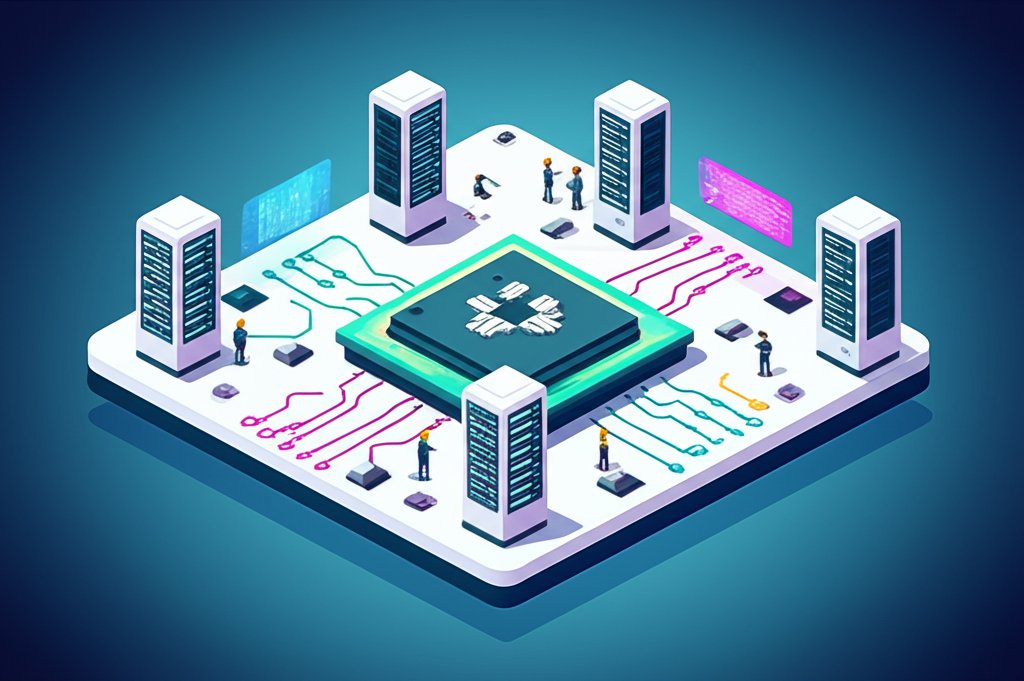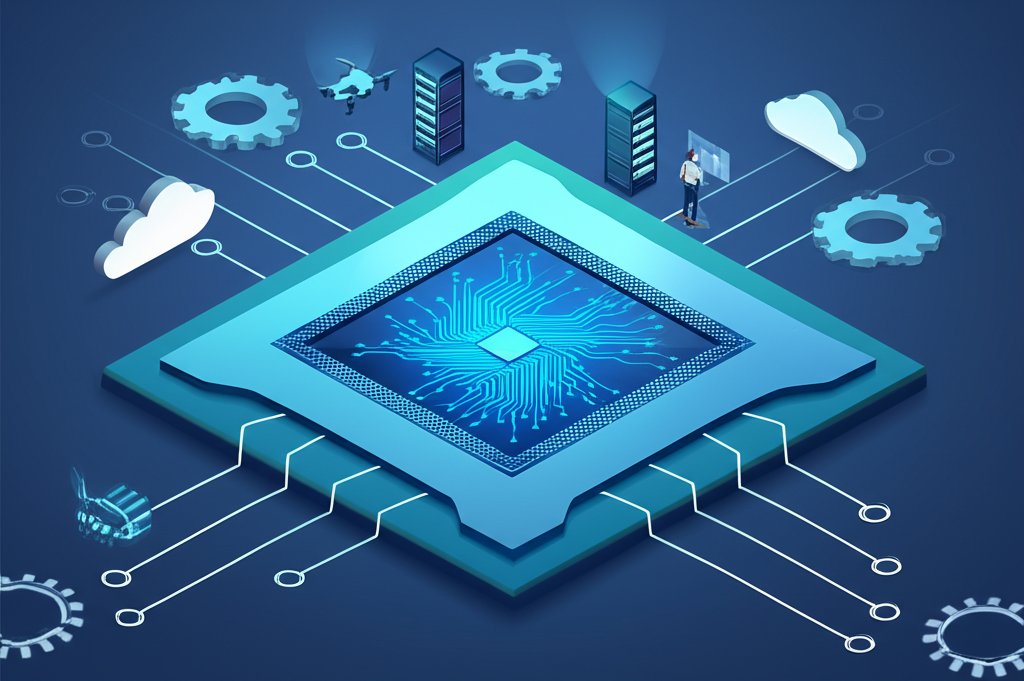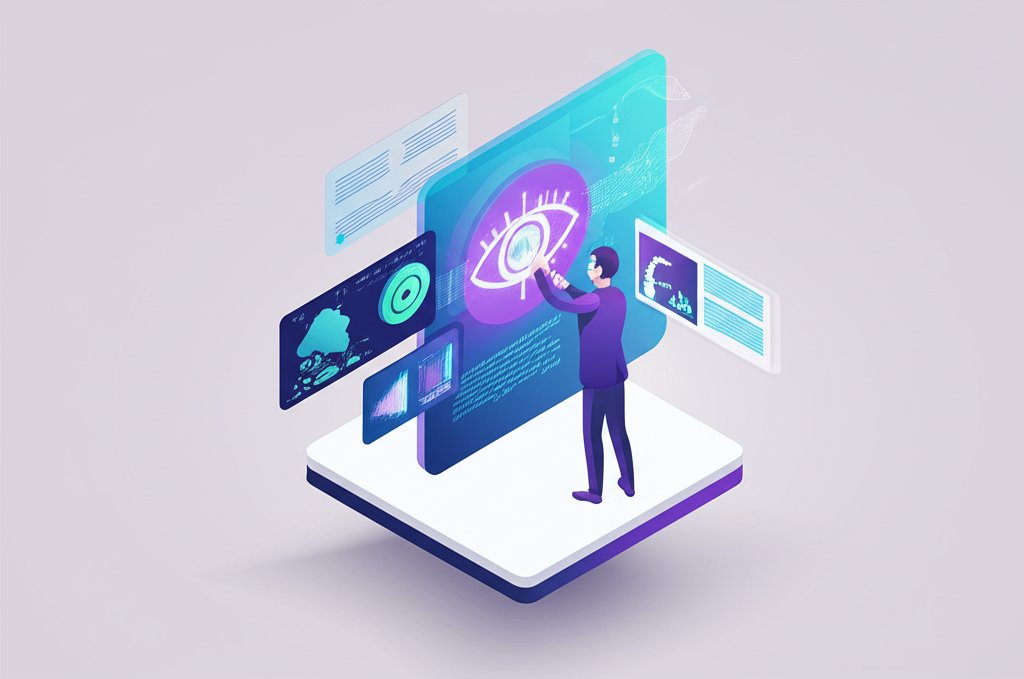The digital age is a relentless, ever-accelerating current, constantly reshaping our world with groundbreaking innovations. For many, navigating this complex and often bewildering current can feel overwhelming. How do we make sense of the dizzying pace of change? What are the truly significant shifts, and what’s just fleeting hype? This is where the keen eye and analytical mind of a seasoned journalist become invaluable. Welcome to a deep dive into the tech landscape, offering not just a surface-level glance at new gadgets, but profound tech insights and comprehensive analyses of the technology trends that will define our future. We’ll unravel the complexities of the global tech industry, equipping you with the understanding needed to not just witness change, but to anticipate and adapt to it.
Navigating the Dynamic Tech Landscape: A Journalist’s Lens

Understanding the modern tech landscape requires more than just reading headlines; it demands a deep, investigative approach, much like a journalist’s pursuit of truth. From the earliest tools of humanity to today’s interconnected world, technology has always been a fundamental driver of progress. But the velocity of change now is unprecedented, creating both immense opportunities and significant challenges.
The Ever-Accelerating Pace of Technology
The evolution of technology is no longer linear; it’s exponential. What once took decades to manifest, now unfolds in mere years, sometimes months. This rapid acceleration is fueled by interconnected advancements in computing power, data analytics, and global communication networks. Consider how quickly artificial intelligence moved from theoretical concept to a pervasive force in daily life, or how blockchain technology is disrupting traditional financial systems. As journalists, we observe these shifts not just as isolated events but as nodes in a vast, interconnected network, each influencing the trajectory of the others. We ask: What underlying forces are driving this speed? What are the second and third-order effects of such rapid innovation on society, economies, and individuals?
Decoding the Global Tech Industry Shifts
The tech industry is a hyper-competitive arena where innovation is currency. Giants like Apple, Google, Microsoft, and Amazon continuously push boundaries, while nimble startups emerge daily, aiming to disrupt established norms. We analyze not just their product releases, but their strategic acquisitions, their investments in research and development, and their battles for market share. The geopolitical implications of technology are also paramount; national interests, intellectual property, and data sovereignty increasingly shape the global tech landscape. A journalist’s insight here cuts through corporate PR to reveal the genuine drivers of industry transformations – from supply chain vulnerabilities to the race for AI dominance. We scrutinize who benefits, who is left behind, and what power dynamics are at play.
Unveiling Key Technology Trends Shaping Tomorrow

To truly master tech trends, one must look beyond the immediate news cycle and identify the foundational shifts that are building blocks for the future. As a journalist focused on future insights, I identify several pivotal technology trends that are not just fads, but fundamental transformations.
Artificial Intelligence: Beyond the Hype
Artificial Intelligence (AI) is arguably the most impactful of all current technology trends. It’s no longer confined to sci-fi; AI is here, permeating everything from personalized recommendations to medical diagnostics, autonomous vehicles, and creative arts. My tech insights reveal that the true revolution lies not just in specific AI applications, but in its ability to augment human capabilities and automate complex tasks.
- Generative AI: Tools like large language models (LLMs) and image generators are changing content creation, coding, and design. They raise questions about authorship, intellectual property, and the future of creative professions.
- Edge AI: Processing data closer to its source, rather than in centralized clouds, enhances speed, privacy, and reduces bandwidth needs. This will be critical for IoT devices and real-time applications.
- Explainable AI (XAI): As AI systems become more complex, understanding their decision-making processes is vital for trust, accountability, and ethical deployment, especially in critical sectors like healthcare and finance.
The Metaverse and Web3: Redefining Digital Interaction
The concepts of the Metaverse and Web3 represent a potential paradigm shift in how we interact with the internet and each other. These are more than just buzzwords; they are visions for a more immersive, decentralized digital future.
- Metaverse: Imagine persistent, interconnected virtual worlds where users can socialize, work, shop, and play using avatars, often facilitated by virtual and augmented reality. This isn’t just gaming; it’s a new frontier for commerce, education, and social connection. The tech industry is pouring billions into developing the infrastructure and experiences for this future.
- Web3: Built on blockchain technology, Web3 aims to decentralize the internet, shifting power from large corporations to individual users through cryptocurrencies, NFTs (Non-Fungible Tokens), and decentralized autonomous organizations (DAOs). This promises greater user control over data and digital assets, though challenges in scalability and regulation remain significant.
Sustainable Tech: Innovation for a Better Planet
Amidst all the innovation, a critical technology trend is the growing focus on sustainability. The tech industry consumes vast amounts of energy and resources, but it also offers powerful solutions to environmental challenges.
- Green Computing: Efforts to reduce the energy consumption and carbon footprint of data centers, AI models, and electronic devices. This includes developing more efficient hardware and software.
- Renewable Energy Technologies: Advancements in solar, wind, and geothermal energy storage solutions, often driven by technology itself (e.g., smart grids, advanced battery technology).
- Circular Economy Tech: Innovations that facilitate recycling, reuse, and repair of electronic goods, minimizing waste and promoting resource efficiency. This is a crucial area for the future of the tech landscape.
- Climate Tech: Technologies specifically designed to monitor, mitigate, and adapt to climate change, such as carbon capture, precision agriculture, and early warning systems for natural disasters.
Quantum Computing: The Next Frontier
While still in its nascent stages, quantum computing represents a speculative yet potentially revolutionary technology trend. Unlike classical computers that store information as bits (0s or 1s), quantum computers use qubits, which can exist in multiple states simultaneously, allowing for exponentially greater processing power.
- Potential Applications: Solving problems currently intractable for even the most powerful supercomputers, including drug discovery, materials science, complex financial modeling, and breaking modern encryption.
- Challenges: Building and maintaining quantum computers is incredibly difficult, requiring extreme cold and isolation. The tech industry is investing heavily, but widespread commercial application is still years, if not decades, away. Journalists keep a close watch on this frontier for its profound long-term implications for the tech landscape.
Deep Tech Insights: A Journalist’s Approach to Foresight
Gathering tech insights is not merely about reporting what is happening, but understanding why it’s happening and what comes next. A journalist’s approach to foresight involves critical thinking, pattern recognition, and an ethical framework.
The Art of Spotting Emerging Technology Trends
Identifying emerging technology trends requires a blend of expertise and intuition. It involves:
- Connecting the Dots: Looking for synergies between seemingly disparate fields (e.g., biotech and AI, or materials science and quantum computing). Major breakthroughs often happen at the intersection of different disciplines within the tech landscape.
- Listening to the Innovators: Engaging with researchers, scientists, engineers, and startup founders who are at the cutting edge. Their struggles and successes often hint at future directions.
- Analyzing Investment Flows: Where are venture capitalists and large corporations putting their money? Significant investments often signal belief in long-term potential for a particular technology.
- Observing Societal Needs: Technology rarely exists in a vacuum. It often arises to address an unmet need or solve a pressing problem. Identifying these needs can help predict where innovation will gravitate.
- Critiquing the Hype Cycle: Distinguishing between genuine breakthroughs and overhyped promises. Not every innovation will achieve widespread adoption, and a journalist must maintain a healthy skepticism.
Ethical Considerations in the Evolving Tech Landscape
As technology advances, so too do the ethical dilemmas it presents. A key aspect of providing insightful commentary on the tech landscape involves exploring these crucial questions.
- Privacy and Data Security: With pervasive sensors and AI, how do we protect individual privacy and ensure data integrity?
- Algorithmic Bias: AI systems can perpetuate and even amplify existing societal biases if not carefully designed and monitored, leading to unfair outcomes.
- Automation and Employment: The rise of AI and robotics will undoubtedly reshape labor markets. How do societies adapt, retrain their workforces, and ensure equitable transitions?
- Digital Divide: As advanced technology becomes more integral to daily life, how do we ensure equitable access and prevent a widening gap between those who can leverage it and those who cannot?
- Misinformation and Deepfakes: The power of generative AI to create realistic but fabricated content poses significant threats to truth, democracy, and trust.
The Journalist’s Role in a Tech-Driven World
In a world increasingly defined by technology, the role of the journalist is more vital than ever. We are interpreters, investigators, and watchdogs, crucial for making sense of the tech landscape for the general public.
Bridging the Gap: Explaining Complex Technology
One of the primary responsibilities is to translate complex scientific and engineering concepts into understandable language. The average person doesn’t need to know the intricacies of quantum entanglement, but they do need to comprehend the potential impact of quantum computing. We simplify without oversimplifying, using analogies, real-world examples, and clear narratives to demystify advanced technology. This ensures that the public can participate in informed discussions about the future.
Holding the Tech Industry Accountable
The immense power and influence of the tech industry necessitate rigorous scrutiny. Journalists play a critical role in:
- Exposing Malpractice: Investigating issues like data breaches, anti-competitive practices, labor exploitation, and the spread of harmful content.
- Questioning Narratives: Challenging the polished narratives put forth by corporations and policymakers, seeking out diverse perspectives, and highlighting dissenting voices.
- Advocating for Transparency: Pushing for greater transparency in algorithms, data collection, and corporate decision-making processes.
- Highlighting Societal Impact: Consistently examining how technology influences human behavior, social structures, economic equity, and democratic processes, ensuring a holistic understanding of the tech landscape.
Conclusion: Charting the Course Through Tomorrow’s Tech Landscape
The journey through the tech landscape is ceaseless, marked by constant innovation and profound change. As a journalist dedicated to providing future insights, my mission is to illuminate these paths, revealing the intricate patterns within the evolving tech industry and deciphering the most impactful technology trends. From the transformative power of AI and the immersive potential of the Metaverse to the crucial innovations in sustainable technology and the futuristic promise of quantum computing, our future is being written by code and ingenuity.
By embracing critical inquiry, ethical awareness, and a commitment to clarity, we can collectively navigate this complex terrain. The future of technology is not a predetermined destination, but a landscape we are actively shaping. Understanding its forces, anticipating its shifts, and engaging with its implications responsibly is not just an academic exercise; it’s essential for crafting a future that benefits all of humanity. Stay curious, stay informed, and engage with the technology that defines our tomorrow.
FAQ
What are the most significant technology trends currently shaping the tech landscape?
The most significant technology trends include the pervasive adoption and advancement of Artificial Intelligence (especially generative AI), the development of immersive digital experiences in the Metaverse and Web3, the increasing focus on Sustainable Tech, and the long-term potential of Quantum Computing.
How does a journalist provide unique tech insights compared to a tech analyst or industry report?
A journalist often offers a broader, more critical, and human-centric perspective. While tech analysts focus on market data and business implications, and industry reports on specific sectors, a journalist integrates these with societal impacts, ethical considerations, and often unearths hidden narratives through investigative reporting, providing a holistic view of the tech landscape.
What role does ethics play in the future of technology?
Ethics plays a crucial role. As technology becomes more powerful and integrated into daily life, addressing issues like data privacy, algorithmic bias, the digital divide, and the impact of automation on employment becomes paramount. Ethical frameworks guide responsible innovation and ensure technology serves humanity positively.
How can I stay informed about rapidly changing technology?
To stay informed about the rapidly changing tech landscape, follow reputable technology journalists and publications, engage with thought leaders, attend webinars and conferences, and critically evaluate information to distinguish between genuine technology trends and fleeting hype.
What is the primary impact of the tech industry on global economies?
The tech industry has a profound impact on global economies by driving innovation, creating new markets, fostering job growth (and sometimes displacement), increasing productivity, and influencing international trade and policy. Its innovations often become foundational infrastructure for other industries.










